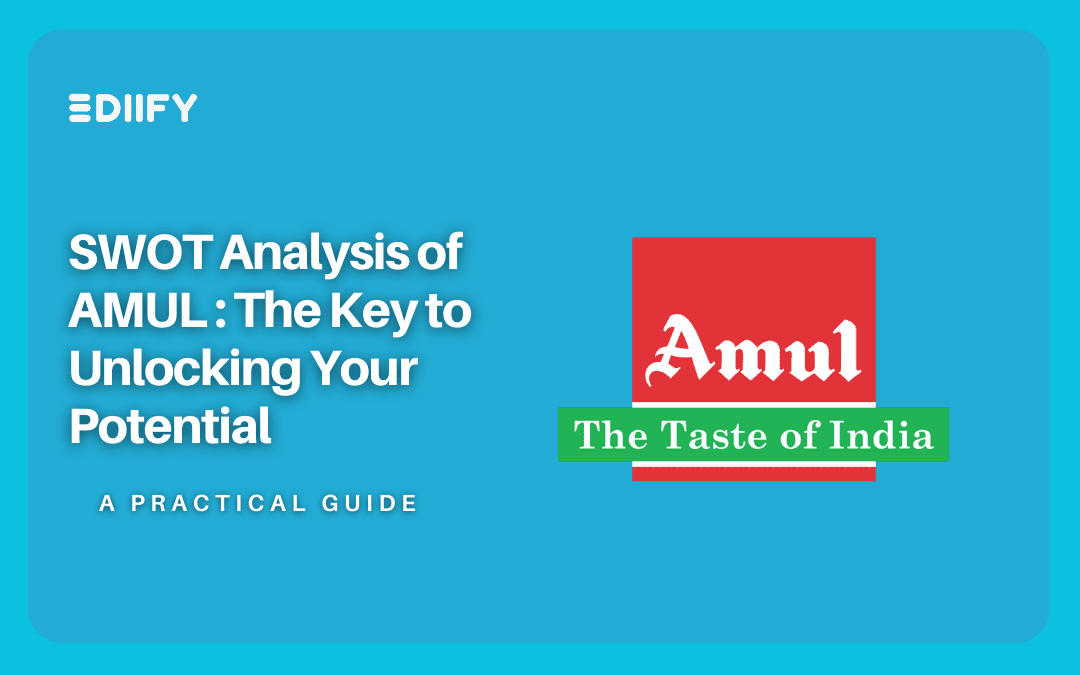
SWOT Analysis of Nestle : An In-Depth Analysis
Introduction:
In the rapidly evolving world of consumer goods, Nestlé stands as a global leader with a history dating back to the 19th century. As one of the largest food and beverage companies globally, Nestlé’s reach extends across the globe. To effectively navigate challenges and seize opportunities in this dynamic industry, Nestlé employs strategic planning tools, with the SWOT analysis playing a central role. This article explores Nestlé’s strategic landscape, dissecting its strengths, weaknesses, opportunities, and threats through SWOT analysis Nestle.

Strengths:
Nestlé boasts an extensive portfolio of well-established brands spanning various categories, from coffee and dairy to pet care and confectionery. The company’s global reach and diversified product range contribute significantly to its market presence. Nestlé’s commitment to research and development has yielded a continuous stream of innovative products that cater to evolving consumer preferences.
The company’s robust distribution network is a key strength, enabling efficient product delivery to diverse markets. Furthermore, Nestlé’s focus on sustainability and corporate responsibility has earned positive recognition, aligning the company with the increasing demand for ethically produced and environmentally friendly goods.
Weaknesses:
Despite its strengths, Nestlé faces challenges. A notable weakness lies in occasional controversies surrounding its marketing practices and raw material sourcing, impacting the company’s reputation and consumer trust. Additionally, the sheer size and complexity of Nestlé’s operations may lead to bureaucratic hurdles and slow decision-making processes.
Another concern is the dependence on specific regions for a significant portion of its revenue, exposing Nestlé to geopolitical and economic risks due to fluctuations in these regions that can impact overall financial performance.
Take a view on the below blog the benefits of self-assessment
https://ediify.com/exploring-the-benefits-of-self-assessment/
Opportunities:
Nestlé operates in an industry marked by evolving consumer preferences and technological advancements, providing numerous opportunities for growth and innovation. The increasing demand for healthier and more sustainable products aligns with Nestlé’s commitment to nutritional excellence, offering opportunities to expand its portfolio in response to changing consumer needs.
Moreover, the growing emphasis on e-commerce and digital platforms presents avenues for Nestlé to enhance its online presence and engage directly with consumers. Collaborations and partnerships with startups or established players in the tech industry can facilitate the company’s digital transformation.
Threats:
The food and beverage industry faces external threats that can impact Nestlé’s performance. Intense competition from both traditional and new players poses a challenge, particularly in light of rapidly changing consumer trends. Economic downturns and currency exchange rate fluctuations also pose significant threats to Nestlé’s financial stability.
Furthermore, heightened scrutiny of the environmental impact of packaging and production processes poses a challenge, necessitating a proactive approach to sustainability to mitigate potential risks.

Conclusion:
Nestlé’s journey in the food and beverage industry demonstrates its adaptability and evolution. A thorough SWOT analysis of Nestle is a company with formidable strengths but not without challenges. By leveraging strengths and addressing weaknesses, Nestlé can capitalize on opportunities and navigate potential threats, ensuring sustainable growth in an ever-changing market. As the company continues to innovate and respond to consumer demands, Nestlé’s future appears promising, contingent on its agility and strategic approach.










